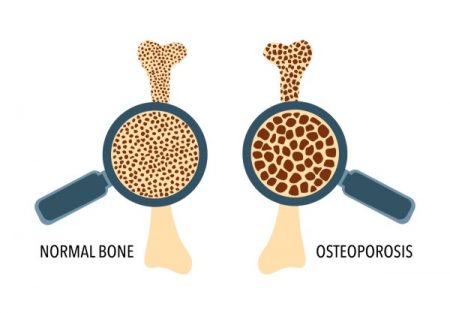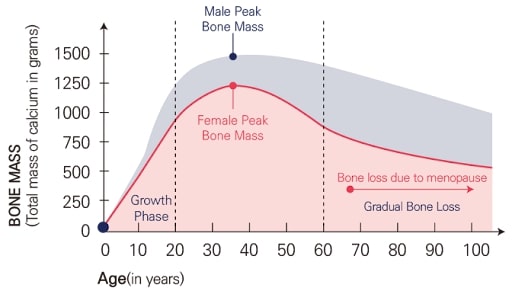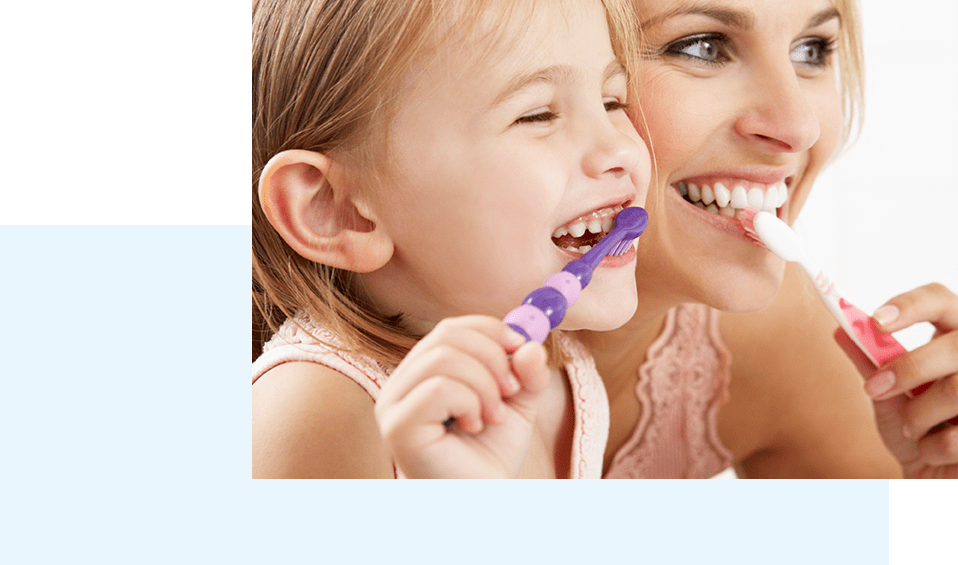Health Benefits of Vitamin K2
Enhancing Bone Health with Vitamin K2

Vitamin K2 Effect on Osteoporosis Prevention
Vitamin K2 can prevent osteoporosis, by activating k-dependent protein, osteocalcin. As we age, maintaining bone health becomes increasingly crucial. Osteoporosis, characterized by low bone mass, affects many individuals, particularly women after menopause and those around age 50. Preventing osteoporosis begins early in life, as bone formation is most intense during childhood and adolescence. After the growth, bone mass declines throughout adulthood. The higher the bone mass acquired before the age of 20–25, the better prognosis for good bone health later in life. Many individuals need to prevent osteoporosis in advance.
By the age of 18 or 19, approximately 90% of peak bone mass is attained, with significant gains occurring during the critical growth phase. The research underscores the importance of achieving optimal peak bone mass during youth.
[Baily, D.A. The Saskatchewan pediatric bone mineral accrual study: Bone mineral acquisition during the growing years. Int. J. Sports Med. 1997, 18, 191–194.]. A 10% improvement in peak bone mass is correlated with a 50% reduction of the risk of osteoporotic fracture later in life.

Vitamin K2 and Osteocalcin
Key to achieving peak bone mass is vitamin K2, which activates osteocalcin, a vital protein hormone. Activated osteocalcin enhances bone mineralization, strengthens bones, and improves calcium absorption, essential for long-term bone health.
Clinical Studies about Vitamin K2 and Osteocalcin
Clinical research has highlighted the efficacy of Vitamin K2 in enhancing osteocalcin levels. A study focused on determining the optimal daily dose of MK7 (a form of Vitamin K2) for improving carboxylated osteocalcin levels among menopausal women. Participants were administered recommended daily intakes as per guidelines.
[Inaba N, Sato T, Yamashita T. Low-Dose Daily Intake of Vitamin K(2) (Menaquinone-7) Improves Osteocalcin γ-Carboxylation: A Double-Blind, Randomized Controlled Trials. J Nutr Sci Vitaminol (Tokyo). 2015;61(6):471-80. doi: 10.3177/jnsv.61.471. PMID: 26875489.].
Effects of taking Vitamin K2
Carbxylated Osteocalcin(cOC)
Time in days
Undercarboxylated Osteocalcin(ucOC)
Time in days
Percentage of cOC VS ucOC
Time in days
※This data is a numerical data of the average cOC/ucOC concentration (ng/ml) in serum
cOC=Activated osteocalcin (The higher the cOC concentration in the body, the better calcium metabolism can be)
ucOC= Inactivated osteocalcin (The higher the concentration, the more inactivated osteocalcin in the body, which requires taking MK-7)
coC/ucOC=Activated osteocalcin/Deactivated osteocalcin ratio (The higher the cOC/ucOC value, the better the calcium metabolism can be)
“Comparison of the effects of vitamin K between men and women in Study 2. Percentage changes in carboxylated osteocalcin (cOC) (A), in undercarboxylated osteocalcin (ucOC) (B) and cOC/ucOC ratio (C). Data are mean6SD. ○: Placebo, ●: MK-7. * p,0.05, ** p,0.01 vs. placebo (Wilcoxon rank-sum test). † p,0.05, †† p,0.01 vs. baseline (Wilcoxon signed-rank test). n523 for men and n534 for women in the placebo group, and n523 (day 0, 28, 56 and 112) or n522 (day 84) for men and n535 for women in the MK-7 group.”
The results demonstrated significant improvements in these markers following MK7 supplementation, highlighting its potential to enhance bone health by activating osteocalcin. This activation plays a vital role in promoting bone mineralization and strength, essential for maintaining overall skeletal integrity.
[Seon-Ok Bang, Kum-Suk Kim and Min-Hong Jeong, (2016).“Effects of Vitamin K2 (Menaquinone-7) in Cheongukjang Powder on Bone Health Circulation in Postmenopausal Women.” Korean J. Food Nutri. Vol. 29. No. 6, 978~984.].
Who Would Need Vitamin K2 for Bone Health?
Postmenopausal Women, maintaining Bone Mineral Density and Reducing Fracture Incidence

Postmenopausal women face increased risks of osteoporosis, particularly those over 55 years old. The sharp decline in estrogen levels during menopause can disrupt bone metabolism, leading to osteoporosis and heightened fracture risk, particularly hip fractures which can be severe and costly to treat.
Vitamin K2 plays a crucial role in preventing osteoporosis by promoting bone mineralization and enhancing bone strength. It supports the activation of osteocalcin, a vitamin K2-dependent protein essential for maintaining bone health in postmenopausal women. Supplementing with Vitamin K2 can help maintain bone mineral density and reduce fracture incidence, supporting overall bone health during this critical stage of life.
Children and Adolescents,
Promoting Bone Growth

Bone growth is most intensive during childhood and adolescence, where up to 80-90% of peak bone mass is formed by early adulthood. Vitamin K2 is essential during this period as it supports the activation of osteocalcin, a protein vital for bone formation and mineralization.
Studies indicate that children and adolescents have significantly higher needs for osteocalcin compared to adults, highlighting the importance of adequate Vitamin K2 intake during these developmental years. However, modern diets often lack sufficient sources of Vitamin K2, leading to potential deficiencies among children.
[Beulens, J. W., van der A, D. L., Grobbee, D. E., Sluijs, I., Spijkerman, A. M., & van der Schouw, Y. T. (2013). "Dietary phylloquinone and menaquinones intakes and risk of type 2 diabetes." Diabetes Care, 36(1), 41-47. https://doi.org/10.2337/dc12-1362.].
Supplementing with Vitamin K2 is crucial for promoting healthy and strong bone growth in children and adolescents, supporting optimal bone mass development and lifelong bone health.
[Beulens, J. W., van der A, D. L., Grobbee, D. E., Sluijs, I., Spijkerman, A. M., & van der Schouw, Y. T. (2013). "Dietary phylloquinone and menaquinones intakes and risk of type 2 diabetes." Diabetes Care, 36(1), 41-47. https://doi.org/10.2337/dc12-1362.].
